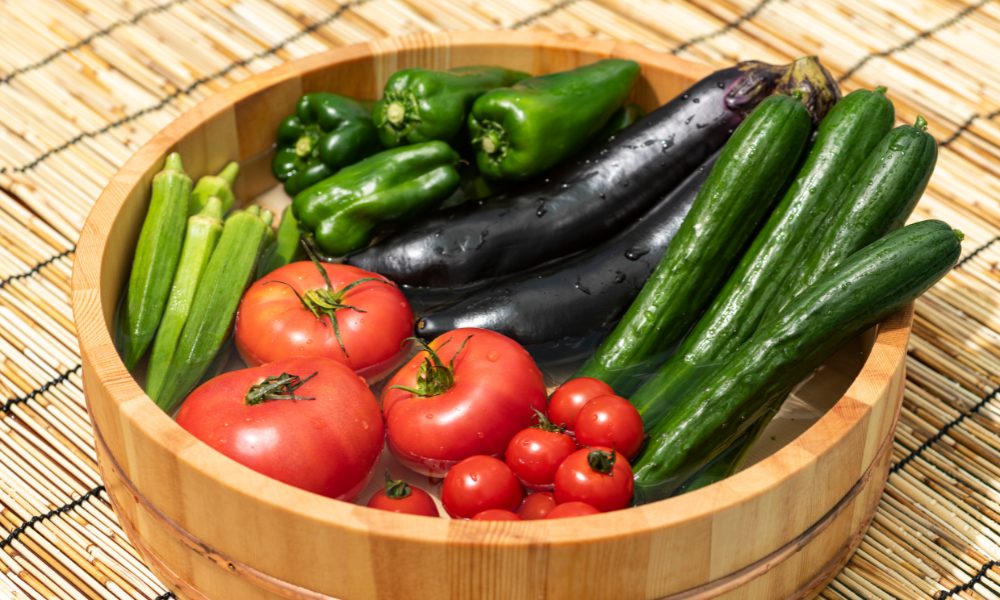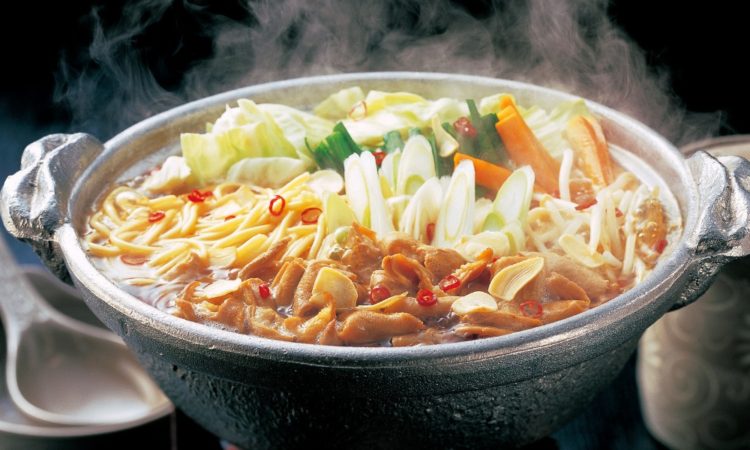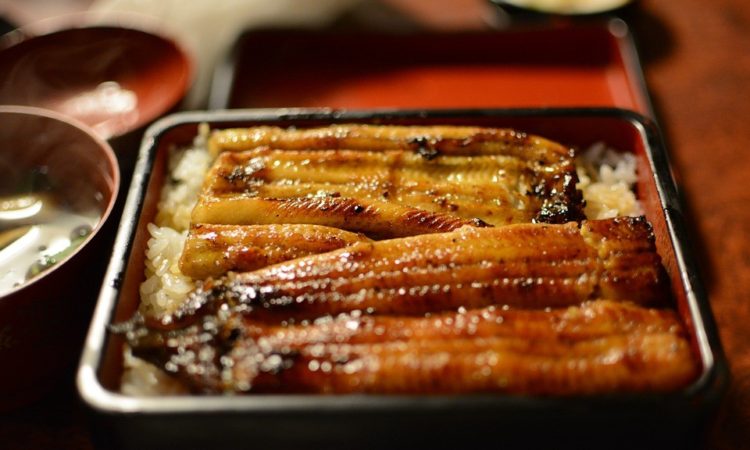Each vegetable has its season, a period when it’s at its peak in terms of flavor and nutrition. And summer vegetables are no exception: when vegetables are in season, they taste better and also pack a greater nutritional punch.
By understanding the seasonality of each vegetable, you can make the most of their freshness and enjoy a delicious and healthy diet.
What Summer Vegetables Should You Be Eating in Japan?
Let’s discover some of the best summer vegetables to eat in Japan
Tomato
It wasn’t until the early Showa period (1926-1989) that tomatoes gained popularity as a culinary ingredient. Today, a diverse range of tomato varieties exists, including smaller, sweeter fruit tomatoes, making them an essential staple on dinner tables everywhere.
Nutritionally, tomatoes are packed with β-carotene, vitamin C, and other essential nutrients. Particularly noteworthy is lycopene, the pigment responsible for its vibrant red color. Lycopene belongs to the carotenoid family and is both heat-resistant and oil-soluble. Cooking tomatoes with oil enhances the absorption of lycopene into the body, making stir-fries an excellent method for maximizing nutrient intake.
When selecting tomatoes, opt for bright red, ripe specimens that are uniformly colored throughout and feel chunky and heavy.
Lettuce

image credit: Canva
Lettuce rose to popularity in the 1960s and has since seen a surge in breeding, resulting in a wide range of varieties such as salad greens, leaf lettuce, and curly green lettuce. Even the well-known sangchu (Korean lettuce), often paired with barbecued meat, belongs to the lettuce family.
Nutritionally, lettuce is prized for its crisp texture and ability to be consumed raw without compromising its nutritional value. To preserve its nutrients, it’s recommended to tear the leaves by hand rather than cutting them with a knife, as cutting can cause nutrient leakage and iron oxidation. Key nutrients found in lettuce include β-carotene, vitamin K, and folic acid.
When selecting lettuce, select specimens with a white core and fresh, shiny, firm leaves. Soft, loose leaves that feel light when held are preferable, as heavier leaves may indicate toughness and bitterness. For non-tuberous varieties like sunny and leaf lettuce, look for fresh leaves with dark tips, a pleasant aroma, and a crisp, refreshing taste.
Okra
Okra, known for its unique stickiness and crunchy texture, is a versatile vegetable enjoyed in various cuisines. While okra can be consumed raw when young and tender, it’s typically eaten cooked, usually boiled, without any substantial change in the quantity of its nutrients such as Potassium, calcium, β-carotene, folic acid, and vitamin K.
When choosing fresh okra, pay attention to three key factors: color, hair production, and size. Opt for okra with a vibrant, glossy green color. Check around the stem and cut end for any brownish discoloration, which indicates aging.
Fresh okra should have a dense covering of hairs. Finally, choose smaller okra, as they tend to be softer and more flavorful. Larger okra may have tougher skin and a bitter taste.
Goya

image credit: Canva
Goya, known as bitter melon in English, is a staple in Okinawan cuisine, characterized by its distinctive bitter taste. Despite its bright green color, it’s surprisingly low in carotene, owing to its light-colored flesh. The bumps on its surface serve as water reservoirs, allowing it to thrive in harsh climates prone to droughts.
In terms of nutrition, goya is rich in momordicin, the compound responsible for its bitterness. It’s also packed with vitamin C, which remains largely intact even when heated, making it an excellent summer dietary supplement. Additionally, it contains beta-carotene and folic acid, further enhancing its nutritional value.
When choosing goya, opt for fresh ones that are firm and bright dark green.
Freshness correlates with bitterness, so the fresher the fruit, the more nutritious and bitter it tends to be.
Enjoy the Best Summer Vegetables in Japan
Explore the vibrant flavors and nutritional benefits of summer vegetables in Japan. From the versatile lettuce to the juicy tomatoes, crunchy okra, and bitter goya, each vegetable offers its own unique taste and health perks.
By understanding their characteristics and seasonality, you can make the most of these fresh and delicious options in your meals.
So, dive into the world of summer produce and enjoy a wholesome culinary experience!
Related Articles:
- The Essential Guide to Zero Waste Shopping in Japan
- Vegetable Delivery Box Services From Farms
- What is Goya and How Do You Use it in Recipes?
Featured image credit: Canva






